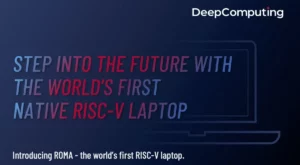Introduction:
In the ever-evolving landscape of semiconductor technology, Intel, under the leadership of CEO Pat Gelsinger, has set forth a bold vision for the future – the journey to a trillion transistors on a single package.
This ambitious goal rests on four major technological advancements that promise to reshape the way we perceive and experience computing.
The integration of a trillion transistors on a single package will revolutionize computing, enabling breakthroughs in artificial intelligence, quantum computing synergies, and real-time big data analytics.
This vast computational power will drive advancements in personalized medicine, immersive technologies like augmented and virtual reality, and enhance the capabilities of autonomous systems such as self-driving cars and advanced robotics.
Additionally, the trillion-transistor milestone holds the potential to significantly improve energy efficiency, contribute to sustainable practices, and redefine the landscape of edge computing in the Internet of Things.
In this blog post, we will delve into each of these pillars, exploring their significance and the collective impact they are set to make on the world of microelectronics.
4 Technological Advancements for 1 Trillion Transistors in one package
1. GAA Transistors: The Quantum Leap in Transistor Technology
At the heart of Intel’s roadmap to a trillion transistors lies the adoption of Gate-All-Around (GAA) transistors. GAA transistors represent a revolutionary departure from the traditional FinFET architecture, offering improved control over the flow of current.
By surrounding the channel on all sides with a gate material, GAA transistors enhance electrostatic control, enabling better performance, energy efficiency, and scalability. This transistor evolution is pivotal in accommodating the increasing demand for computational power in an era defined by data-intensive applications, artificial intelligence, and the internet of things.
Read More: Samsung’s 3nm GAA Process Takes Crypto Mining to the Next Level
2. RibbonFET: Powering the Future from the Backside
Intel’s RibbonFET technology introduces a paradigm shift in power delivery mechanisms within semiconductor packages. By optimizing the backside of the chip for power delivery, RibbonFET reduces power consumption and enhances thermal efficiency.
This innovation tackles the rising power demands of modern processors while maintaining manageable heat dissipation. RibbonFET, when paired with GAA transistors, creates a powerful combination that enhances computational capabilities with unprecedented energy efficiency.
Read More: What is Heterogeneous integration: Advantages Types and Technology
3. EUV Lithography: From 193 to 13.5 nm
Extreme Ultraviolet (EUV) lithography marks a significant leap forward in semiconductor manufacturing processes. With a shift from 193 nm to 13.5 nm wavelength, EUV lithography by ASML enables the production of smaller, denser transistors, paving the way for increased transistor counts on a single chip.
The High Numerical Aperture (NA) in EUV boosts precision and resolution, aiding the miniaturization of semiconductor components. This advancement is crucial for reaching the trillion-transistor milestone, enabling densely packed and intricately designed circuitry essential for next-gen computing.
Read More: ASML Makes History: First High-NA 300M$ EUV Litho Scanner Shipped to Intel; Resolution upto 8 nm
4. 2D to 3D Integration: Dimensional Scaling Redefined
The transition from 2D to 3D integration represents a fundamental shift in the architecture of semiconductor devices. Intel maximizes space by stacking layers of transistors and interconnects, improving chip efficiency. This dimensional scaling leap integrates a trillion transistors, enhancing interconnect density, reducing signal latency, and boosting overall system performance.
Read More: What are 3 Major challenges in EUV Lithography ?ogy
Conclusion:
Intel aims for a trillion transistors on a single package, driven by GAA transistors, RibbonFET, EUV lithography, and 3D integration. These technologies usher in a new era of computing, merging immense computational power with energy efficiency for innovations previously deemed on the fringes of possibility. Intel’s pursuit signifies a redefinition of computing, pushing the boundaries of semiconductor technology towards an imaginative and boundary-breaking future.








